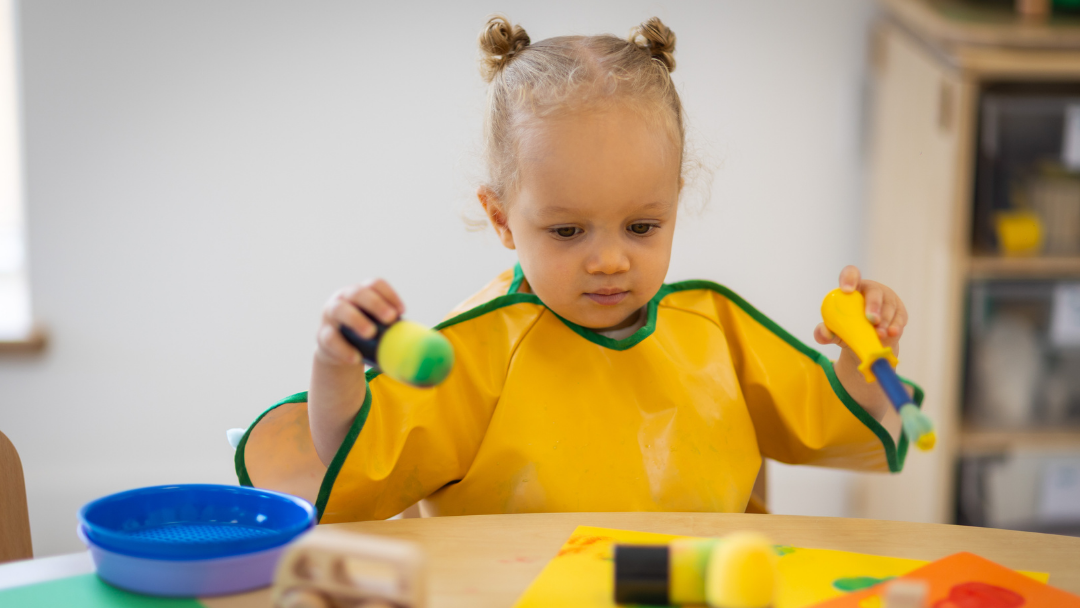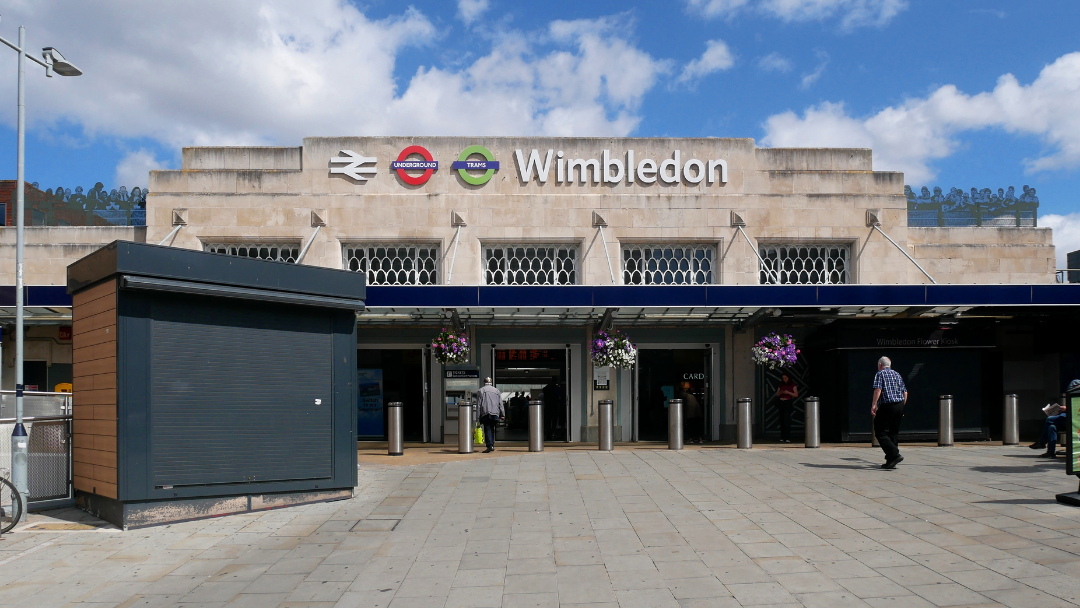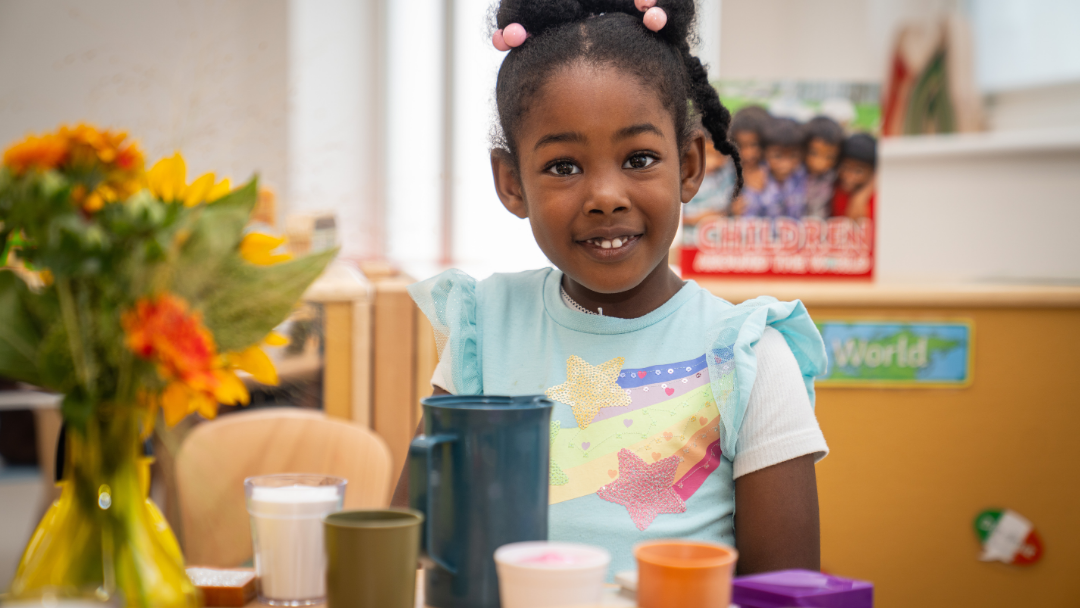When it comes to mathematical development, children are exposed to this concept from a very early age, almost unknowingly by the adults around them.
Babies and toddlers' first encounters will be from the shapes and sizes of objects they see and encounter daily, number of songs and rhymes and opportunities to see differences in small quantities of objects.
Research shows that even babies under one year of age have some sensitivity to quantities and numbers, babies have been found to recognise the difference between sets of one, two and three objects. Also, young children often use their bodies as a tool for understanding mathematical concepts such as weight, timing, and space.
Toddlers will experience concepts of maths in lots of ways, including playful explorations, stories, noticing differences, repeating patterns, size and shape, investigations, nature, and imaginative play opportunities.
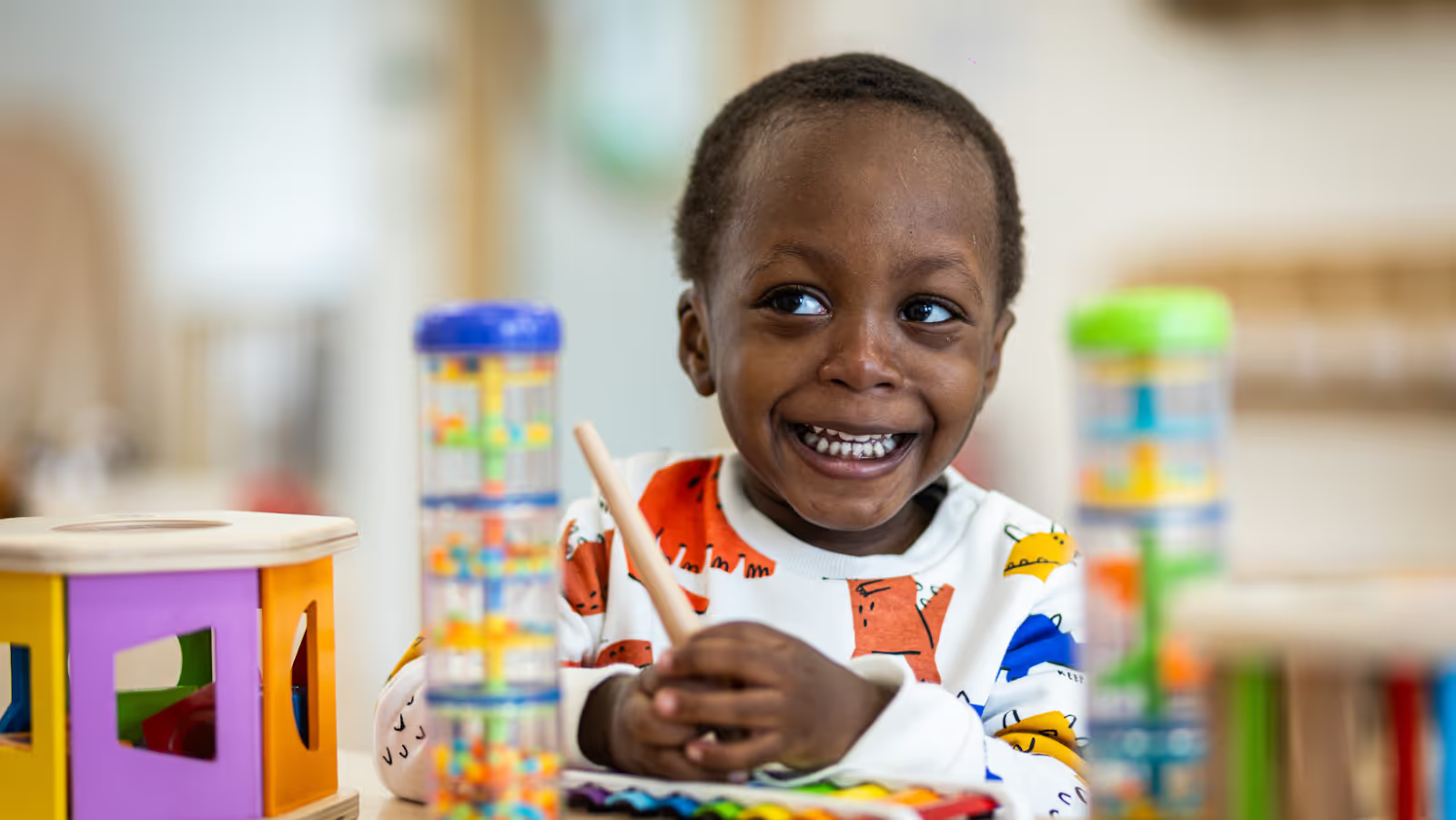
When providing rich mathematical experiences for children we group Mathematical development into key areas of development these areas include:
- Number and counting
- Spatial awareness
- Pattern
- Shape
- Measure
Numbers and counting
In this area, children learn the ‘howmanyness’ of things, often described as the ‘twoness’ of two or the ‘threeness’ of three. Children need lots of opportunities to count, for example…. people, objects, pieces of fruit, and stairs as we climb, they then begin to understand that the final number is the total.
Also, children need to identify that sounds and actions can be counted i.e., five claps, three stomps!
Activities to support numbers and counting:
Focus on 1-5 to begin with, try these number rhymes....
- 1,2,3,4,5, once I caught a fish alive
- 5 currant buns in a baker’s shop
- 5 little speckled frogs
- 5 little men in a flying saucer
Counting things of different sizes: This helps children to focus on the numerosity of the count.
- Create simple tracks to 5 and count out five cars/dinosaurs/buttons etc to match. Encourage counting along the track starting at one.
- Create chalk tracks or boxes outside and add objects into the boxes i.e., five conkers in number five, count as you add them.
- Counting things which cannot be moved i.e., pictures in books, three birds, four tigers.
- Play hidden objects games where objects are revealed for a few seconds, for example, small toys hidden under a bowl – shuffle them, lift the bowl briefly and ask how many there were.
Sorting collections
Children will often love creating collections of things, how many times do we come back from a trip to the local park with a pocketful of conkers given to us by our children? Encourage sorting these collections and noticing which set has more and which set has less through simple discussions.
- Line up: Encourage your child to ‘line up’ a collection of soft toys from smallest to largest. Sort into two sets, which has more?
- Play dough cakes: Create simple cakes from play dough to open a pretend cake shop, adding buttons and bits and bobs to the tops of the cakes. Arrange the cakes in differing amounts on the plates, who has more? Who has less? Are they all the same?
- Towers: Create simple towers with blocks or Duplo with your child. Count the blocks, who has more blocks in their tower? Add a number card to the towers to show number correspondence.
Spatial awareness
Children practice spatial understanding as they use apparatus such as open-ended building blocks. Also, as they crawl around and under in dens and tunnels etc. We encourage Spatial reasoning through the language we use with children, “look it’s op top”. “Can you collect the dropped toys under the table?’ There are strong links between physical development and outdoor play which tie in with spatial awareness as children climb and explore.
Activities to promote spatial awareness:
Outdoor play
Trips to the park, climbing, using play tents, creating dens (inside too), tunnels and scooters or push along toys all help develop spatial awareness.

Boxes
Children love a large cardboard box, these can be climbed in and played with in lots of imaginative ways. The very act of being inside a box and perhaps sharing the space with another child gives a strong sense of spatial awareness. You can also encourage modelling with packaging to create various creations. Children will use spatial reasoning when fitting things inside and around their models.
Hide and Seek
Games where children squeeze themselves into spaces, and hide under, on top or behind things help them gain a strong sense of spatial awareness.
Shape sorters and puzzles
Playing with shape sorter toys where children ‘post’ three-dimensional shapes or fit simple shape puzzle pieces, all give children exploratory experiences which help them gain spatial awareness on a smaller scale.
Patterns
Patterns are central to maths and research shows that children’s ability to see patterns forms the basis of early mathematical thinking. Patterning supports the foundations for recall of the counting sequence and understanding number operations. Children should talk about and identify patterns around them. For example: stripes on clothes, designs on wallpaper. Use words like ‘pointy’, ‘spotty’, and ‘stripy’.
Activities to promote pattern awareness:
Animal patterns
Print pictures or look at images in books of different animal patterns. Talk about and describe these patterns, which animals have spots/stripes or patches? Have you any fabrics at home the children could look at i.e., scarves to sort?
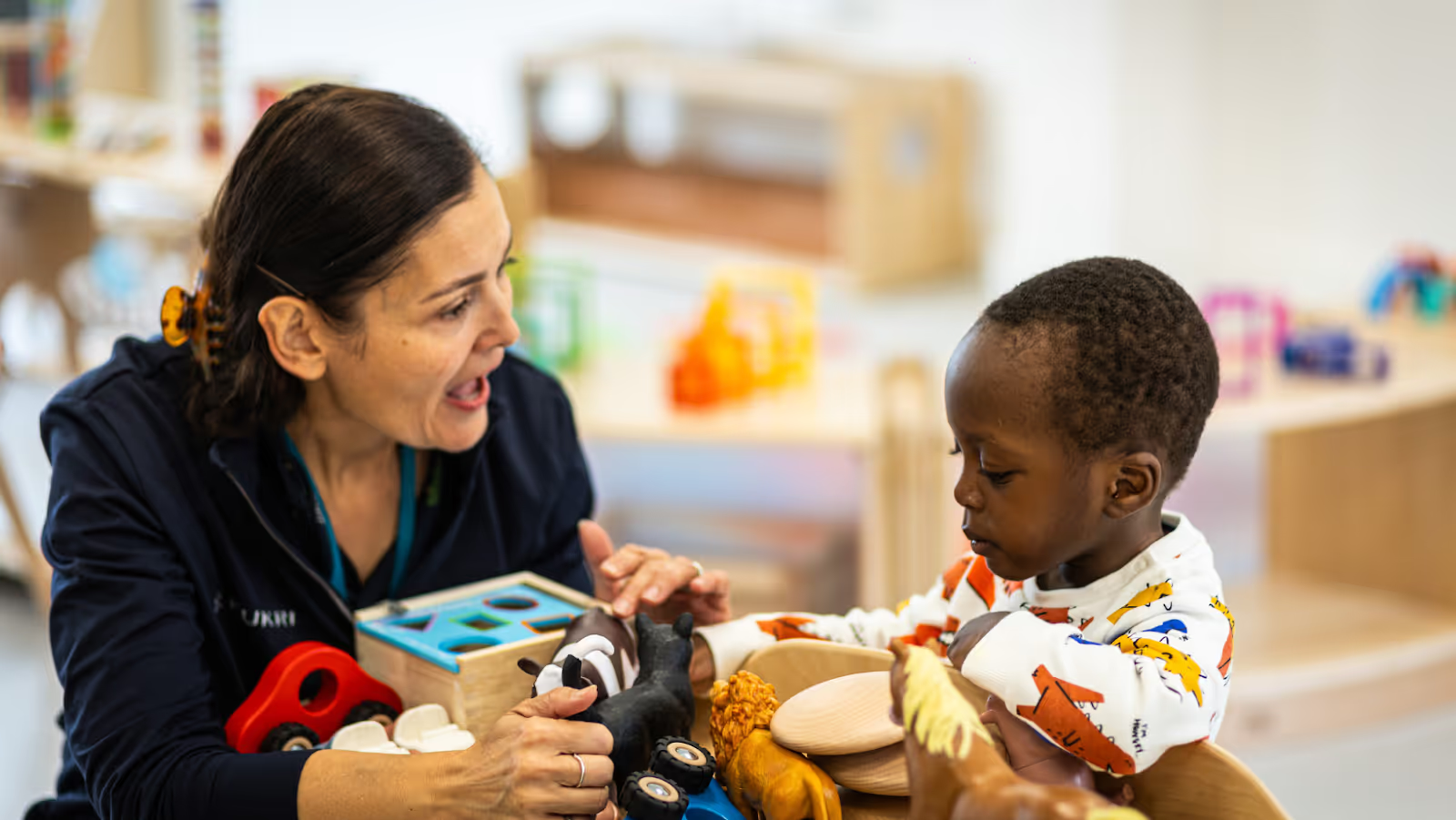
Patterns out and about
While on walks collect leaves, of different types, shells, acorns, flowers etc to look at and describe. Can these items be sorted or laid out in a pattern? Create mandala-type patterns putting the leaves in circles.
Patterns in songs and rhymes
Patterns can also be found in songs and rhymes, i.e., heads, shoulders, knees and toes, the wheels on the bus. Sing songs which contain repeated refrains such as these. Patterns can also be seen in physical action combinations, try using claps and stomps to make up rhythms and ‘sound’ patterns i.e. clap, clap, stomp!
Threading beads
Create strings of beads which create simple repeating patterns i.e. red, blue, red, blue
Shape
Within this area, children are encouraged to play with and explore shapes which are both two and three-dimensional. They will learn to identify shapes and learn the properties of shapes (number of sides and corners for example). We tend to begin with basic shapes at this age such as circles, squares, triangles and rectangles.
Activities to promote shape awareness:
Stick shapes/shapes from nature
Use sticks or stones, found on walks to create squares, triangles and rectangles shapes.
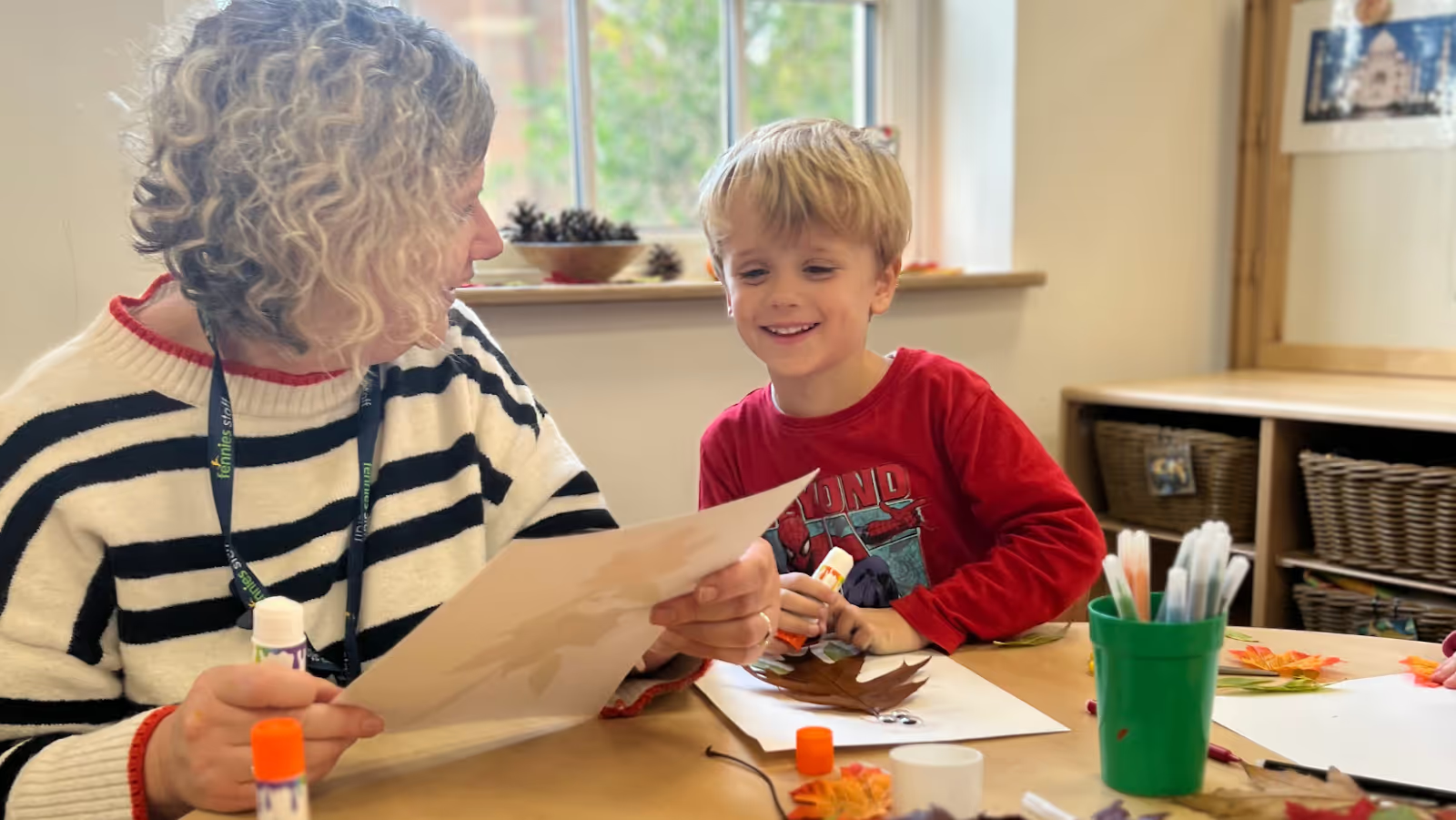
Printing with shapes
`Use cut-up fruit/ blocks/any shaped items from home to print in paint on paper
Shape hunts: Hide paper cut-out shapes around the house or outside in the garden, start with two different shapes i.e., circle and square for children to find and sort into sets.
Playdough shapes
Use playdough to create long strips, use these strips to create simple shapes.
Measure
In this area, we encourage children to compare items by length, weight and volume as a precursor to more formal learning later. In nursery play dough modelling can provide a good opportunity to discuss the length of snakes or the weight of different-sized lumps. Likewise, water and sand-play can provide lots of opportunities to highlight capacity.
Activities to promote Measure:
Block play
Playing with wooden blocks or Duplo is a great way to introduce simple opportunities for measuring. Encourage children to make enclosures for animals or dinosaurs, estimating the space needed to enclose three or more animals. Use blocks to create towers, which tower is the tallest/shortest? How can we tell? Use blocks laid out in a line to measure items from home or toys, i.e., how many blocks long is this puzzle?
Measuring hands
Draw around your child’s hands and cut them out, use these as tools for measuring, how many hands long is the chair/table?
Bath time capacity
Either at bath time or through the use of bowls or buckets of water, encourage children to use cups, pots, and plastic bottles to empty and fill. This gives opportunities for children to understand the basic concepts of full, half-full and empty. A simple way to teach simple concepts of volume.
Wherever possible think of mathematical concepts when playing with your child, there are so many ways that maths comes into focus through our interactions with children daily, and most importantly have fun!
FAQ
Subscribe to our newsletter
Stay up to date with Fennies news


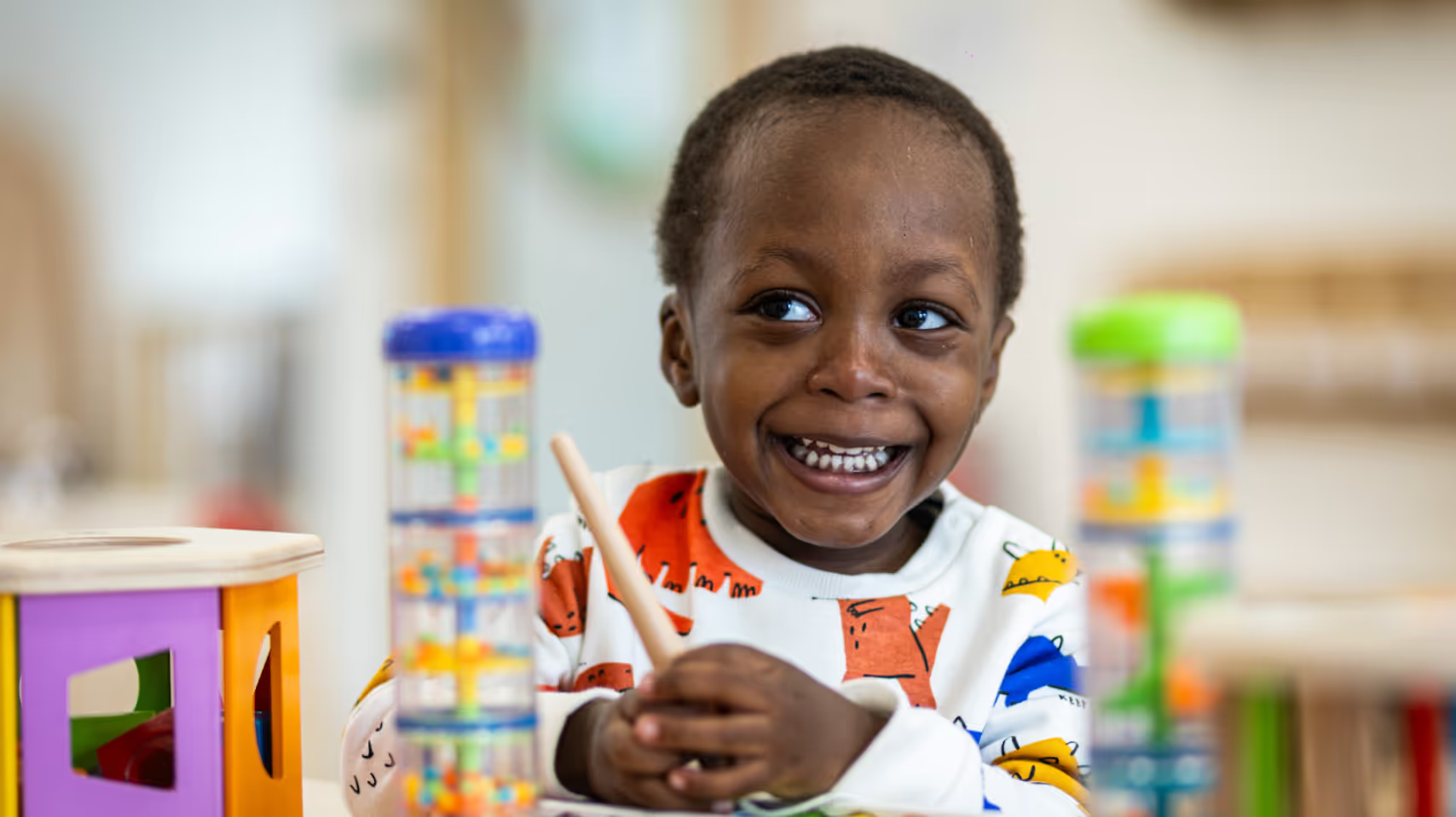

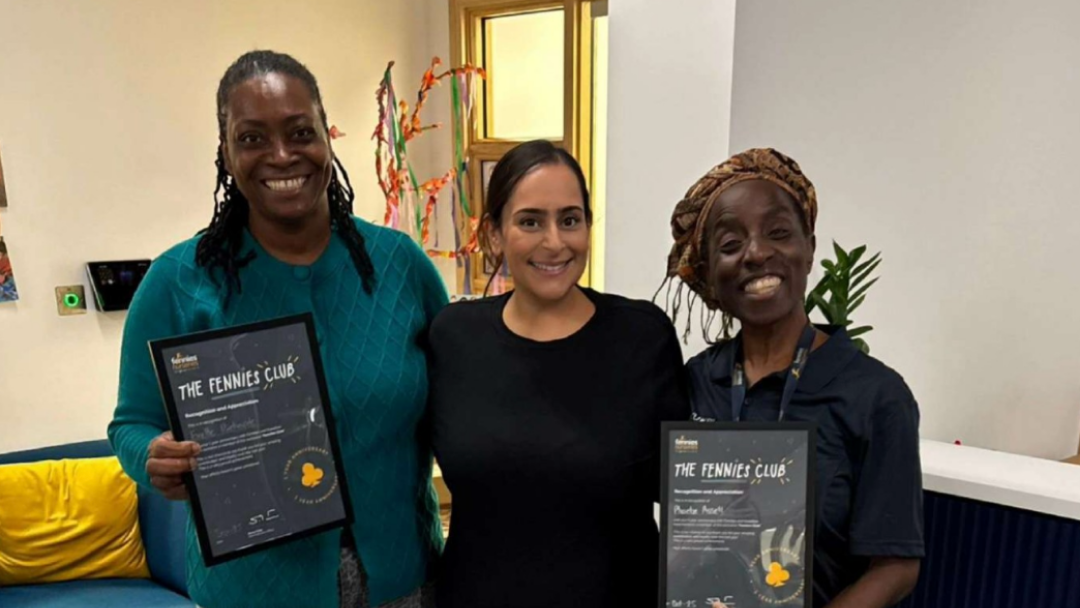
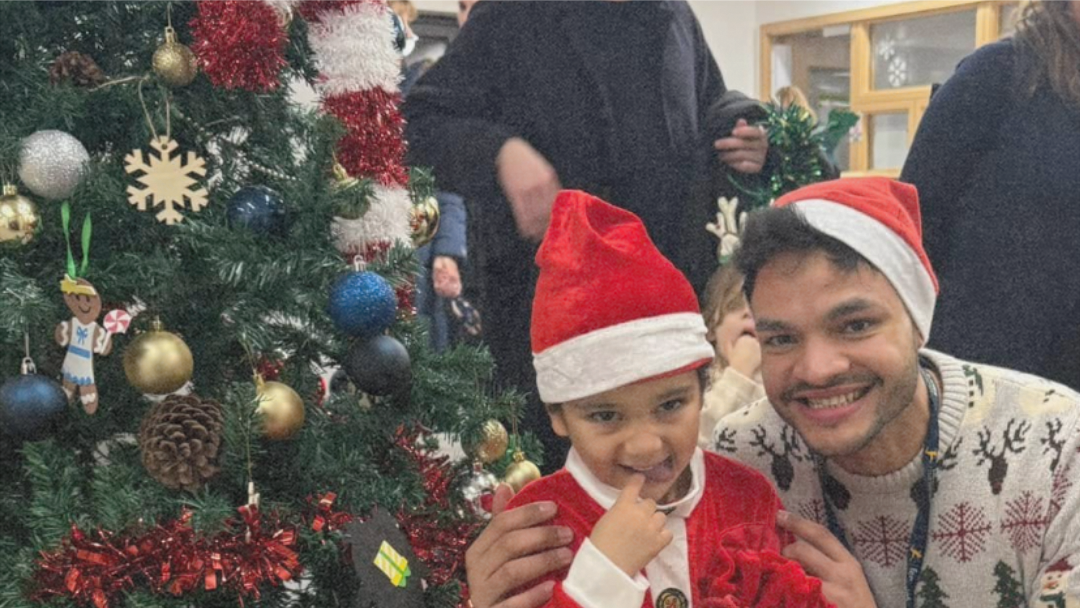
.png)
